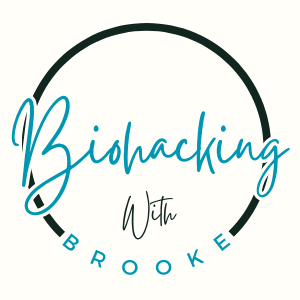Imagine waking up refreshed and ready to take on the day. Sounds great, right? You can transform your sleep with just a few tweaks to your environment. Biohacking your sleep means using smart strategies to create an ideal space for rest and repair.
In this post, you’ll discover how factors like light, noise, and temperature can make a big difference. Implementing simple changes can lead to deeper, restorative sleep. You’ll learn how to turn your bedroom into a sleep sanctuary.
Get ready to say goodbye to restless nights and hello to revitalizing Zzz’s. Your best rest is just a few adjustments away!
Creating the Perfect Sleep Sanctuary
Transforming your sleep environment can significantly enhance the quality of your rest. Here are some essential elements to consider for creating your ideal sleep sanctuary.
Lighting: Set the Mood Right
Good lighting is critical for a restful sleep environment. Dim lighting signals to your body that it’s time to wind down. Aim for a cozy atmosphere that invites relaxation. Blue light, emitted by screens and fluorescent bulbs, disrupts your natural sleep-wake cycle. It blocks melatonin, the hormone that makes you sleepy. To counteract this, consider these options:
- Use soft yellow bulbs in your bedroom.
- Install dimmable switches so you can adjust the brightness.
- Turn off screens at least an hour before bed. For more on blue light reduction, check out How Blocking Blue Light at Night Helps You Sleep.
Keeping your room dark is also crucial. Consider blackout curtains or an eye mask to reduce light exposure. Remember, your sleep sanctuary should encourage a restful state.
Temperature Control: Cool is Key
Temperature plays a significant role in your sleep quality. Experts suggest keeping your bedroom between 60°F and 67°F. This range mimics the natural drop in body temperature that occurs during sleep. Here’s how to create a cooler environment:
- Use a fan or air conditioner to regulate temperature.
- Invest in breathable bedding made from natural fabrics for better airflow.
- Consider cooling mattress pads or pillows. For more insights, see What’s the Best Temperature for Sleep?.
Experiment with your thermostat to find what feels best for you! A cooler room can lead to deeper sleep and fewer awakenings during the night.
Minimizing Noise: Silence is Golden
A quiet environment can enhance your sleep experience significantly. Noise can easily disturb your rest, so consider soundproofing options. Here’s how to create a serene atmosphere:
- Use weather stripping on doors and windows to block sound.
- Hang thick curtains to dampen noise from outside.
- Experiment with a white noise machine to mask unwanted sounds. These machines can blend incoming noise and create a comfortable sound environment. Learn more from How to Use a White Noise Machine for Privacy.
Additional tips include using earplugs or playing calming sounds to further drown out distractions. Prioritizing quietness is essential for those deep, restorative zzz’s you’re aiming for.
Choosing the Right Sleep Gear
Selecting the right sleep gear is essential for enhancing your sleep quality. When optimizing your sleep environment, three key components make all the difference: mattresses, pillows, and bedding. Each element plays a unique role in achieving restorative Zzz’s, so let’s dig into the specifics.
Mattresses: Comfort and Support
The right mattress can transform your night’s sleep. There are several types to choose from, each with benefits tailored to different sleeping styles:
- Memory Foam: Contours to your body, offering excellent support and pressure relief. It’s great for those who experience joint pain.
- Innerspring: Offers a traditional feel with good bounce and airflow. If you’re someone who gets too hot during the night, this might be ideal.
- Latex: Naturally breathable and provides a firm, supportive feel. It’s also resistant to allergens, making it a smart choice for many.
- Hybrid: Combines the support of innerspring coils with the comfort of foam. Perfect for those who can’t decide!
- Gel: Infused with cooling gel to help regulate temperature. If you’re a hot sleeper, this will keep you comfortable through the night.
For a detailed overview, check out 5 Types of Mattresses Explained. This guide will help you find the one that suits your needs best.
Pillows: The Right Height Matters
Choosing the perfect pillow can change how well you sleep. Your sleeping position plays a crucial role in this decision. Here’s how to find the right fit based on your sleep style:
- Back Sleepers: Look for a medium loft pillow. It supports the neck’s natural curve while preventing strain.
- Side Sleepers: Opt for a thicker pillow to fill the gap between your head and shoulder, ensuring your spine stays aligned.
- Stomach Sleepers: A low-loft, softer pillow helps avoid neck strain. Too high of a pillow can lead to discomfort.
To learn more about tailoring your pillow choice, see How to Choose the Best Pillow for Your Sleeping Position.
Bedding: Soft and Breathable Fabrics
Your bedding also impacts sleep quality. The right materials can enhance comfort and temperature regulation. Here are some excellent options:
- Cotton: Soft and breathable, making it a popular choice. Look for high thread count for added comfort.
- Linen: Naturally moisture-wicking and breathable, ideal for hot sleepers.
- Bamboo: Known for its smooth texture and temperature control, this is excellent for sensitive skin.
- Tencel: Made from sustainably sourced wood, it’s soft and breathable, a great eco-friendly option.
For more insights into bedding materials, check out What Bedding Material is Best?. Choosing the right gear is all about personal preference, so experiment to find what works best for you!
Incorporating Sleep-Friendly Technology
Integrating technology into your sleep strategy can lead to better rest. With the right tools, you can track your sleep patterns and create an environment that promotes relaxation and rejuvenation. Here are two essential tech categories to consider: wearable sleep trackers and smart sleep aids.
Wearable Sleep Trackers
Wearable sleep trackers are revolutionizing how we monitor and enhance our sleep. These devices, often in the form of smartwatches or rings, gather data about your sleep habits and provide valuable insights. They measure metrics such as heart rate, movement, and sleep stages, giving you a clearer picture of your nightly rest.
Some popular options include:
- Oura Ring: This sleek ring provides comprehensive insights, tracking sleep quality, stages, and even daytime activity levels. Check out its features in The Best Sleep Trackers.
- Whoop Strap 4.0: Ideal for athletes, this strap focuses on recovery metrics and offers personalized insights to improve your sleep quality. For more details, see The 2 Best Sleep Trackers of 2024 | Reviews by Wirecutter.
- Fitbit Charge 5: This fitness tracker includes sleep score features that help you understand your sleep quality and suggest improvements.
These devices can help you identify patterns, such as how late-night activities affect your sleep. If you consistently wake up feeling unrested, revisiting your routines based on these insights can be a game changer.
Smart Sleep Aids: Apps and Devices
Smart sleep aids are another great way to enhance your sleep environment. From apps that guide your meditation to devices that generate soothing sounds, these tools can help transition you into sleep mode. Here are a few noteworthy options:
- Headspace: This app offers meditation and sleep sounds to help ease your mind before bed. Perfect for establishing a calming pre-sleep routine.
- Calm: Known for its immersive soundscapes and bedtime stories, Calm helps create an atmosphere conducive to sleep.
- Sleep Cycle: This app analyzes your sleep patterns and gently wakes you during your lightest sleep phase. It also provides detailed sleep analysis, allowing you to track your progress.
- White Noise Lite: A straightforward app that plays various white noise sounds to help block out distractions.
In addition to apps, consider smart devices like the Hatch Restore 2, which combines a light and sound machine to simulate natural sleep cues. For a comprehensive look at the best gadgets, check out The Best Sleep Gadgets and Apps.
By incorporating these sleep-friendly technologies, you’re taking active steps toward improving your sleep quality. Utilizing data and smart aids can transform your nightly routine into a restful experience that supports your overall wellness.
Establishing a Sleep Routine
Creating a consistent sleep routine can greatly improve your sleep quality. This involves both winding down in the evening and starting strong in the morning. Let’s dive into some effective strategies for both ends of the spectrum.
Wind Down: Evening Rituals That Work
Setting the right tone for sleep starts hours before bed. Engaging in calming evening rituals can significantly enhance your ability to drift off peacefully. Here are some effective activities to help calm your mind:
- Set a bedtime: Choose a specific time to go to sleep and stick to it. Consistency helps train your body’s internal clock.
- Turn off electronics: Screens emit blue light that interferes with melatonin production. Put your devices away at least an hour before sleep.
- Read a book: Pick up a light read or something familiar. This can help divert your mind from daily stresses.
- Practice relaxation techniques: Engage in deep breathing, gentle stretching, or meditation to shift your mindset into relaxation mode.
For more evening ritual ideas, visit Bedtime Rituals to Help You Sleep. And if you’re looking for a structured approach, check out How to Build a Better Bedtime Routine for Adults for additional tips.
Morning Habits: Start Strong for Sleep Success
Morning habits can set the stage for better sleep that night. A strong start to your day influences how well you rest later on. Here’s how to craft a morning routine that supports good sleep:
- Wake up at the same time: Consistency is key. Try to wake up around the same time daily, even on weekends, to maintain your body’s rhythm.
- Get some sunlight: Exposure to natural light first thing in the morning can help regulate your circadian rhythm. Step outside or open those curtains!
- Stay active: Incorporate physical activity, even if it’s just a short walk. Exercise releases endorphins, which can improve mood and help with sleep later.
- Mind your caffeine: Limit caffeine intake to the morning. Consuming it too late can disrupt your ability to fall asleep later on.
For more on optimizing your morning routine, check out AM Routines Sleep Experts Swear By for Better Nightly Zs. Remember, how you start your day can shape how well you sleep that night!
Conclusion
Transforming your sleep environment can make a big difference in how well you rest. By adjusting light, temperature, and noise levels, you can set the stage for deeper, more restorative sleep. Choosing the right mattress, pillows, and bedding ensures comfort and support tailored to your needs.
Don’t forget to incorporate technology that tracks sleep patterns or aids relaxation.
Start making these adjustments today. Your journey to better sleep begins now. How will you biohack your space for the ultimate Zzz’s?
Brooke is a rock-climbing 🧗♀️, tennis-playing 🎾, biohacking 🧬 bookworm 📚 on a mission to unlock the secrets of health, longevity, and living life to the fullest 🌟. When she’s not scaling cliffs, hitting the courts, or testing out the latest hacks, you’ll find her nose in a book or adventuring with her four-legged best friend 🐕 by her side. With a knack for turning science into simple, actionable tips, Brooke’s writing is your guide to hacking your biology and living your best, most vibrant life!

![Biohacking Your Sleep Environment for Restorative Zzz's [Tips Inside]](https://biohackingwithbrooke.com/wp-content/uploads/2024/11/biohack-sleep-environment.jpeg)
